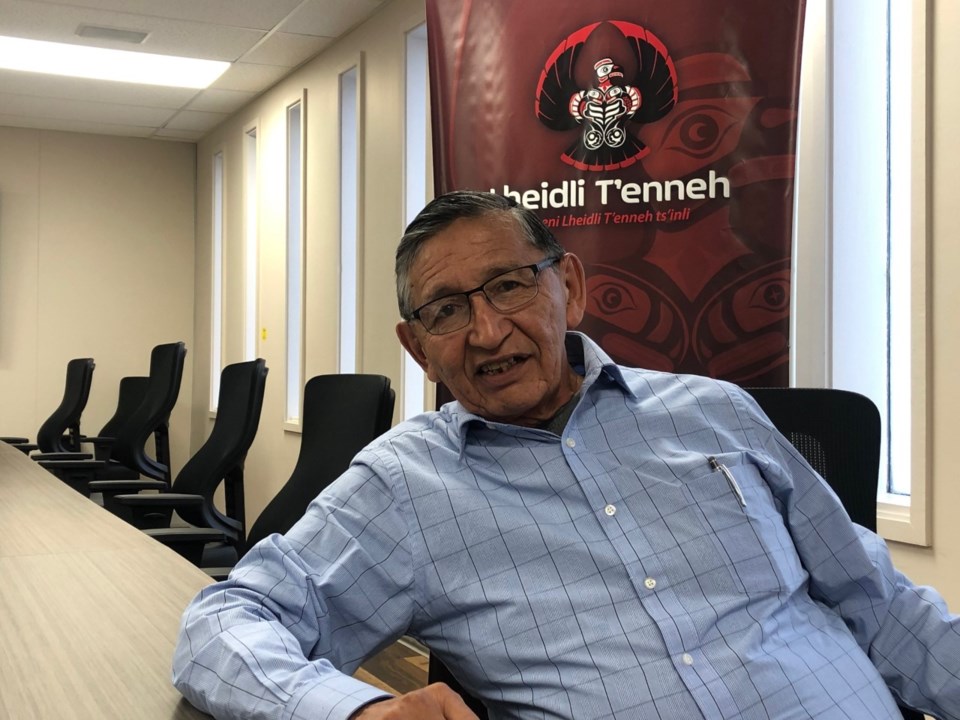Lheildi T’enneh Elder Clifford Quaw has a special interest in WWII history, not only because he loves learning but because he’s known so many northern B.C. Indigenous veterans personally.
When the Second World War erupted in September 1939, many Indigenous people again answered the call of duty and joined the military.
By the end of the conflict in 1945, over 3,000 First Nations members, as well as an unknown number of Métis, Inuit and other Indigenous recruits, had served in uniform.
Quaw said there was about 40 or so Indigenous veterans who had served in World War II from northern B.C. but all of them have now died.
“We don't have one left. We always remembered what they had done, all the sacrifices, and what they went through, hell, just so we can have the freedom we have today,” said Quaw.
Nov. 8, marks National Indigenous Veterans Day which is a memorial day observed in Canada in recognition of aboriginal contributions to military service, particularly in the First and Second World Wars and the Korean War.
“They enlisted in the Canadian Army and from then on, they were treated as equals, unlike the society of the day. There’s a lot of racism in those days,” explained Quaw.
“They were treated as persons or humans. They’d say ‘you watch my back and I’ll watch your back’ because it was: you’re going to kill or be killed. And like other veterans in WWII, they went through hell.”
Skilled soldiers
Quaw explained that First Nations soldiers brought special skills to the battlefield like their ability to get the lay of the land, they were crack shots and well versed in reconnaissance.
“In those days, they were stewards of the land and they weren’t afraid,” said Quaw.
Indigenous soldiers were also used as code talkers as they would translate sensitive radio messages into Indigenous languages like Cree or Dakelh so they could not be understood if they were intercepted by the enemy.
Another Indigenous "code talker" would then translate the received messages back into English so they could be understood by the intended recipients.
“I knew seven First Nation veterans from Lehidli, Nadleh, Nak'azdli, Saik’uz and they never talked about it,” said Quaw. “But they talked about the good times.”
Quaw said one of them was his uncle Jimmy and he used to drive to Vanderhoof to sit in a Café and hear Jimmy and other vets talk about the fun times they had and how they would play jokes on each other.
Quaw said he learned later that William Nooski, who was from Nadleh, was in the first Canadian dividson a paratrooper, same with Dave Benoit from Nak’azdli and Alec Paul from Saik’uz was in the Canadian Seaforth Highlanders.
“I researched it after awhile and realized that Alec Paul had gone ashore in Normandy on Juno Beach same with William and Dave,” said Quaw, adding that Paul told him that Juno Beach was hell.
“He said American soldiers were slaughtered, like shooting ducks in a barrel,” recalled Quaw.
“He said you started running for your life and if you saw your buddy drop beside you, you couldn’t stop. If you did you would become a target, so he had to leave all his buddies behind because they had to achieve their objective.”
Quaw also reflected solemnly on the fact that Indigenous people made such good soldiers because of their experiences in residential schools.
“They were already trained and conditioned to obey orders that’s why they make good soldiers.”
Quaw said after the war that same conditioning made it difficult for Indigenous veterans to seek help for their trauma because they lived by a ‘don’t ask, don’t tell’ mentality.
Second class citizens
However, despite being treated as equals on the battlefield, Indigenous veterans faced many challenges when they returned to Canada.
It was not until 1995, fifty years after the Second World War that Indigenous Peoples were allowed to lay Remembrance Day wreaths at the National War Memorial to remember and honour their dead comrades.
“They gave so much, and to be treated like that? Still makes me mad today, how they treated our First Nations veterans.”
Returning Indigenous veterans were also not entitled to the same benefits as non-Indigenous veterans and many had to give up their status as the Indian Act specified that Indians absent from the reserve for four years were no longer Indians.
“You're stuck in the middle, no rights. They had nothing and yet they came home and ignored it all and came back to reserves and tried to reform their lives again.”
This resulted in a number of Indigenous veterans including Tommy Prince, the most decorated Indigenous war veteran whose medals included the American silver star and six service medals, facing lives of despair and poverty.
“They had fought as equals as comrades in arms from all segments of Canadian society, so it was a melting pot and yet when they came home and took their uniform off, they were treated as second-class citizens in their own land.”
Quaw reflects that despite the bravery of these men, Canada did not treat them as heroes, and points to the fact that First Nations peoples did not even have the right to vote federally without conditions until 1960.
Quaw noted that his uncle Jimmy once said that, “I didn’t realize when I got into the army, when I came home, this would happen to us.”
“They gave so much, most of them gave their lives and when they came home, they were second-class citizens.”



